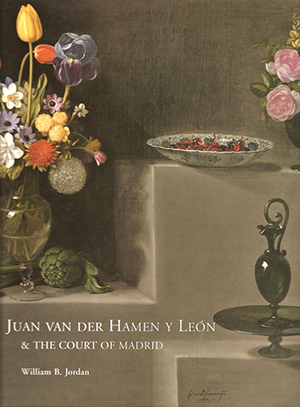Juan Van der Hamen y León and the Court of Madrid
The Meadows Museum will be the exclusive U.S. venue for the first monographic exhibition ever held of the work of the Madrilenian painter Juan van der Hamen y León. Van der Hamen (1596-1631) was one of the most famous and prolific Spanish still life painters of the seventeenth century. While the exhibition will present the very best of Van der Hamen’s still lifes borrowed from public and private collections all over the world, its larger aim is to show for the first time the complete Van der Hamen, the painter esteemed above all in his lifetime for his versatility—for his portraits, allegories, landscapes, flower paintings, and large-scale religious works executed for churches and convents in the environs of Madrid and Toledo. Not only did his oeuvre as a whole encompass this unprecedented range of subject matter, he was, more than any single artist, responsible for introducing many of these new genres to Spain. Although his fame today has been eclipsed by the long career of Velázquez, van der Hamen’s star was very bright when the young Sevillian was just finding his way at the court of young King Philip IV.
This exhibition is the product of forty years of research of North American art historian William B. Jordan, former director of the Meadows Museum, and will be accompanied by a monograph devoted to every aspect of the painters work.
—
El Museo Meadows será la única sede americana para la primera exposición monográfica jamás realizada sobre la obra del pintor madrileño Juan van der Hamen y León. Van der Hamen (1596-1631) fue uno de los más famosos y prolíficos pintores españoles de naturaleza muerta del siglo XVII. El objetivo de la exposición no sólo es el de mostrar sus mejores bodegones sino también el de presentar, por primera vez, una visión completa de la obra del artista, famoso en su tiempo por su versatilidad a la hora de pintar diferentes géneros, que van desde la pintura de retrato, de alegoría, de flores de paisaje, hasta de tema religioso de gran tamaño para iglesias y conventos en Madrid y Toledo y sus alrededores. Van der Hamen fue capaz de aglutinar todos estos géneros artísticos y, lo que es más importante, fue el responsable, más que ningún otro artista de su época, de introducir muchos de ellos por primera vez en España. A pesar de que su fama, hoy en día, está eclipsada por la larga carrera de Velázquez, su prestigio en Madrid era ya relevante cuando el joven sevillano llegó a la corte en busca de hacer carrera artística al servicio de Felipe IV.
Esta exposición, que vendrá acompañada de una monografía detallada sobre el artista, es el resultado de cuarenta años de investigación llevada a cabo por el historiador del arte norteamericano William B. Jordan, director fundador del Museo Meadows.
Carrie Sanger
Marketing & PR Manager
csanger@smu.edu
214.768.1584









